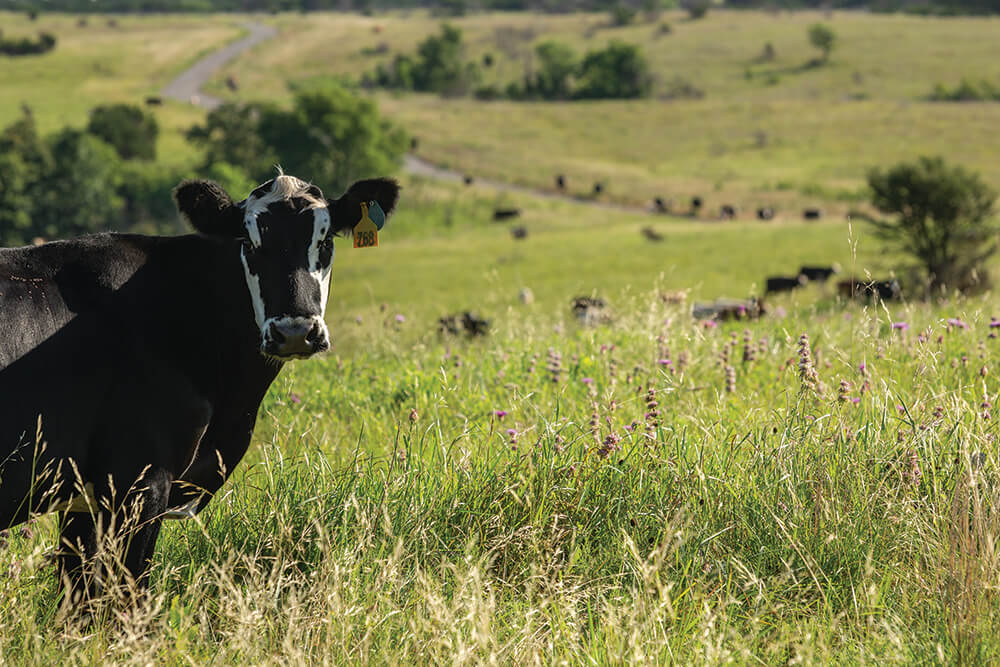The Road to Renewal
The 2019 annual report offers a glimpse into the journey of ranchers on the road of regenerative agriculture, the process of rebuilding degraded soils using practices based on ecological principles.
The road through life is marked with opportunities to learn and to contribute to the betterment of others. There are struggles and choices. There are opportunities to be bold and moments to be seized.
The journey of every farmer and rancher aims to nourish the nations in this generation and those to come. To do that, more and more are realizing the need to improve, not merely sustain, the land by rebuilding soil health through a process known as regenerative agriculture.
What is Regenerative Agriculture?
Regenerative agriculture surpasses sustainability. It addresses the reality that much of the nation’s land, air and water is degraded or polluted, and it takes a long view that considers what we can do to actually improve the quality of those resources. It seeks to nurture the land’s natural abilities, to restore degraded soils using practices based on ecological principles — thinking of soil, plant, animal and water as part of one interconnected system that serves as the foundation for society.
For farmers and ranchers, regenerative agriculture ultimately builds soil organic matter and resiliency of the land, making it more drought tolerant and disease resistant. It also results in cleaner air and water, enhances wildlife habitat, and captures carbon to combat climate variability — for the benefit of all society. Finally, these principles help keep ranches profitable through decreased use of chemical inputs and increased yields. However, embarking on the regenerative journey is no easy task.

The path is filled with ups and downs. It is best traveled with friends and guides familiar with the potholes and promising detours. Still, much of the journey is not fully mapped. Causal pathways between management practices and land regeneration need science-based evaluations. Technologies require testing. Research then must transform into practical solutions followed by education that empowers farmers and ranchers to make decisions with confidence.
For the past 74 years, Noble Research Institute has guided farmers and ranchers as they steward our nation’s grazing lands and provide food and fiber for families — their own and those beyond the farm gate.
This annual report is a glimpse into their journey of sacrifice, one that is supported by Noble through research, education and consultation. It is a peek into the long road to renewal.

We’re passionate about what we do. We don’t consider it work. We just consider ourselves fortunate and blessed. But this is greater than that. We want to make sure we leave the land better than we found it.”
Gary Price, 77 Ranch, Texas
Regenerative agriculture is the process of restoring degraded soils using practices based on ecological principles.
Regenerative agriculture promotes:
- Building soil organic matter and biodiversity.
- Healthier and more productive soil that is drought- and flood-resilient.
- Decreased use of chemical inputs and subsequent pollution.
- Cleaner air and water.
- Enhanced wildlife habitat.
- Capturing carbon in the soil to combat climate variability.
Why Grazing Lands
Most soil health initiatives are focused on row-crop acreages, which fails to address the hundreds of millions of acres of degrading grazing lands. Managed grazing animals — including cattle, horses, bison, sheep, goats and others — benefit the health of these lands. Noble Research Institute is focused on filling this gap by promoting land stewardship in grazing animal production with producer profitability.
- 665 million acres of pasture and rangeland cover the U.S.
- Cattle spend the majority of their lives on grazing lands and play a key role in nutrient recycling through manure distribution, stimulating plant growth and working the soil.
- Grazing lands make up 41% of U.S. land usage, making it the single largest use in the nation — more than row crops, cities and timberland.
- 85% of grazing lands in the U.S. are unsuitable for producing human food crops.
- The biological plant-soil-microbe interactions of grazing operate in concert to store atmospheric carbon in the soil, which benefits production and mitigates climate variability.



Comment